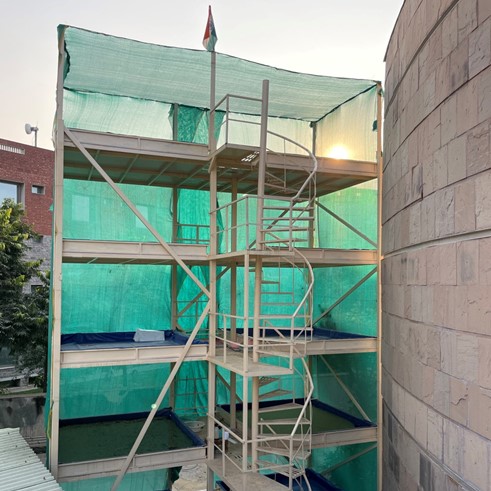Development of a cost-effective scalable carbon capture process through enhanced cultivation of the aquatic fern Azolla Spp.
Supported By:Emerson Electric India Co. Pvt. Ltd.

About the Project
At TERI School of Advanced Studies (TERI SAS), our centre is pioneering an innovative Azonian Carbon Capture Project, a first-of-its-kind nature-based carbon capture initiative in India. This project explores the potential of Azolla, an aquatic fern with exceptional carbon sequestration properties, to create a scalable and sustainable solution for reducing CO2 emissions.
With climate change accelerating, nature-based solutions offer a promising pathway to complement technological interventions. By harnessing Azolla's rapid growth and high carbon absorption capacity, this initiative seeks to develop a cost-effective, replicable carbon capture model that can be adapted by various institutions and industries.
The Azonian Process: A Breakthrough in Carbon Capture
Azolla is a fast-growing aquatic fern capable of fixing atmospheric carbon at a rate significantly higher than many terrestrial plants. The Azonian Process leverages Azolla’s unique properties to establish a vertical carbon capture tower at TERI SAS, designed to capture up to 0.5 tons of CO₂ annually.
- High Efficiency: Azolla’s rapid biomass production allows for continuous carbon capture.
- Vertical Farming Model: he five-tiered structure maximizes space efficiency for CO2 sequestration.
- Sustainable Biomass Utilization: Captured carbon is stored in biomass, which can be repurposed for biofertilizers, biofuels, and animal feed, promoting circular economy principles.
- Adaptability: This nature-based solution can be replicated in various environments, from urban campuses to rural agricultural settings.
Why Azolla?
- Fixes Atmospheric Carbon: Capable of removing 7.7 kg CO2 per square meter per year.
- Nitrogen Fixation: Enriches soil and reduces reliance on synthetic fertilizers.
- High Biomass Productivity: Doubles in mass every 2 to 5 days under optimal conditions.
- Historical Impact: Scientific evidence suggests Azolla played a key role in global CO₂ reduction during the Eocene period.
Project Goals
- Develop a scalable, cost-effective nature-based carbon capture framework.
- Quantify and monitor CO₂ sequestration rates in a structured, research-driven manner.
- Utilize captured biomass for eco-friendly applications, reducing waste and emissions.
- Create a replicable model for other HEIs and industries to adopt carbon capture solutions.
- Engage students, researchers, and sustainability practitioners to expand knowledge and action on climate solutions.
For more information contact Mr Souryadeep Basak at souryadeep.basak@terisas.ac.in
